


A Fascinating Journey Into Nature's Avian Realm
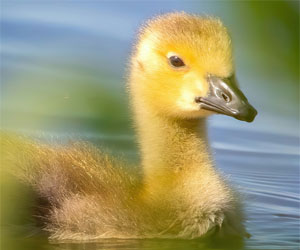
Birdwatching, also known as birding, is a captivating and timeless hobby that invites enthusiasts to embark on a fascinating journey into the world of feathered wonders. It's a pursuit that appeals to people of all ages and backgrounds, offering a deep connection with nature, a sense of discovery, and a gateway to the avian realm. In this article, we'll explore the rich and diverse world of birdwatching, touching upon its history, appeal, and the many rewards it brings to those who embrace it.
A Historical Perspective: Birdwatching has a long and storied history. It was once considered the exclusive pastime of aristocrats and naturalists, with records of notable birdwatchers dating back to the 18th century. Over the centuries, it has evolved from a curiosity-driven endeavor to a widespread hobby embraced by people from all walks of life. Today, birdwatching is more accessible than ever, with a global community of enthusiasts who share a passion for avian creatures.
The Appeal Of Birdwatching:
Birdwatching's enduring popularity can be attributed to its multifaceted appeal:
A Connection With Nature: Birdwatching provides a direct and intimate connection with the natural world. It invites enthusiasts to step outdoors and immerse themselves in the sights and sounds of diverse ecosystems, from lush forests to coastal wetlands.
Discovery And Exploration: Each birdwatching outing is a journey of discovery. Every observation offers the chance to encounter new species, behaviors, and habitats, providing endless opportunities for exploration and learning.
A Sense Of Serenity: Birdwatching is a calming and meditative experience. It allows individuals to escape the hustle and bustle of daily life, fostering a sense of peace and tranquility.
Community And Camaraderie: Birdwatchers often form tight-knit communities, connecting with others who share their passion. Bird clubs, online forums, and group outings provide opportunities for shared experiences and the exchange of knowledge.
Scientific Contribution: Birdwatching isn't just a hobby; it's a valuable scientific pursuit. Enthusiasts contribute to citizen science projects, gathering data on bird populations, behaviors, and migrations that aid in ornithological research and conservation efforts.
The Rewards Of Birdwatching:
Engaging in birdwatching offers numerous rewards:
Learning And Knowledge: Birdwatchers develop a deep understanding of avian species, their behaviors, and habitats. This knowledge fosters a profound appreciation for the natural world.
Conservation Advocacy: Birdwatchers often become passionate advocates for conservation. They witness the beauty and fragility of bird habitats and actively support initiatives to protect these vital ecosystems.
Mindfulness And Stress Reduction: Birdwatching promotes mindfulness, allowing individuals to fully immerse themselves in the present moment and reduce stress and anxiety.
Lifelong Enjoyment: Birdwatching is a hobby that can be enjoyed throughout one's life, from childhood to old age. It's a source of lifelong enjoyment and a means of staying connected to nature.
The world of birdwatching is a journey into the enchanting realm of avian creatures. It's a hobby that transcends time and offers a wealth of experiences, from learning and discovery to conservation and community. So, whether you're a novice or a seasoned birder, birdwatching promises a world of fascination, appreciation, and connection with nature's feathered wonders.
 Ultimate Frisbee's origins in the counterculture movement of the 1960s are a significant part of its legacy. It reflects the spirit of that era, with an emphasis on peace, cooperation, and a rejection of traditional authority figures. The sport's early enthusiasts were drawn to its inclusive nature, where all genders and abilities were welcome, and players were encouraged to resolve disputes amicably. This ethos continues to shape the sport's culture and is evident in the high level of sportsmanship that players are expected to uphold, making it unique among competitive team sports.
Ultimate Frisbee's origins in the counterculture movement of the 1960s are a significant part of its legacy. It reflects the spirit of that era, with an emphasis on peace, cooperation, and a rejection of traditional authority figures. The sport's early enthusiasts were drawn to its inclusive nature, where all genders and abilities were welcome, and players were encouraged to resolve disputes amicably. This ethos continues to shape the sport's culture and is evident in the high level of sportsmanship that players are expected to uphold, making it unique among competitive team sports.
Over the years, Ultimate Frisbee has grown exponentially, expanding to all corners of the globe. It gained recognition as a legitimate sport and established governing bodies like USA Ultimate, which sets the rules and standards for the game in the United States. The sport's presence at the World Games and the World Flying Disc Federation World Ultimate Club Championships underscores its international reach.
One of the most remarkable aspects of Ultimate Frisbee's legacy is its inclusive and diverse community. Players hail from a wide range of backgrounds and cultures, and gender equity is a core value, with many teams embracing mixed-gender play. The sport's emphasis on fair play and mutual respect has fostered a close-knit global community that supports growth and development in new regions.


 The act of camping invites us to unplug from the digital world and embrace the solace of simplicity. With limited or no internet access, we are freed from the shackles of screens and notifications. Instead, we find ourselves engrossed in the here and now, appreciating the quietude of nature and the presence of loved ones around the campfire.
The act of camping invites us to unplug from the digital world and embrace the solace of simplicity. With limited or no internet access, we are freed from the shackles of screens and notifications. Instead, we find ourselves engrossed in the here and now, appreciating the quietude of nature and the presence of loved ones around the campfire.
Moreover, tranquil camping escapes allow us to reconnect with our most primal instincts. As we set up camp, gather firewood, and cook our meals over an open flame, we become attuned to the rhythms of the environment and the resources it provides. This connection with the essentials of survival fosters a sense of self-sufficiency and a deeper appreciation for the world around us.
Tranquil camping escapes are also an invitation to rediscover the beauty of simplicity. With fewer distractions and a pared-down lifestyle, we find ourselves rejoicing in the little things—a breathtaking sunrise, the soothing crackle of a campfire, or the wonder of stargazing without light pollution. These small moments of beauty are amplified in the peaceful backdrop of the natural world.
Furthermore, the allure of tranquil camping escapes lies in the bond it creates with friends and family. Campfires become the heart of camp life, where stories are shared, laughter echoes through the night, and connections are strengthened. It's a time for engaging in conversations without the distraction of screens, playing games, and building lasting memories with loved ones.
Keys To Victory On The Battlefield
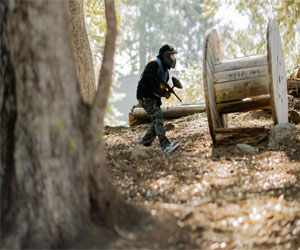 2. Cover And Suppression
2. Cover And Suppression
Suppression and providing cover fire are vital elements in winning paintball games. By keeping your opponents' heads down and restricting their movements, you can create opportunities for your team to advance, secure objectives, or take advantageous positions. Supporting your teammates with covering fire allows them to maneuver more effectively.
3. Flanking Maneuvers
Outflanking your opponents is a classic and effective paintball strategy. By taking a wide route to the side or rear, you can catch your opponents in a crossfire and disrupt their plans. Flanking maneuvers can be especially powerful when combined with effective communication and coordination.
4. Defense And Control
In certain scenarios, adopting a defensive approach can be a winning strategy. Defend critical areas, objectives, or positions to maintain control and prevent the opposing team from advancing. Defensive play requires patience, excellent marksmanship, and teamwork to hold your ground.
5. Adaptability And Flexibility
Paintball games can be unpredictable, and the ability to adapt and be flexible in your strategies is a key element in achieving victory. Stay open to changing tactics as the game evolves. What worked in one round may not work in the next, so being willing to adjust is crucial.
6. Teamwork And Roles
Teamwork is an integral part of winning paintball games. Within your team, define roles based on each player's strengths and preferences. Roles can include snipers, assault players, defenders, and more. When these roles are strategically combined, they can be highly effective in achieving objectives and eliminating opponents.
7. Map Awareness
Familiarity with the paintball field's layout is essential. Knowing the terrain, hiding spots, and potential ambush locations can give you a significant edge. By understanding the map, you can predict enemy movements and plan your strategies accordingly.




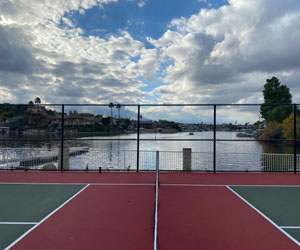
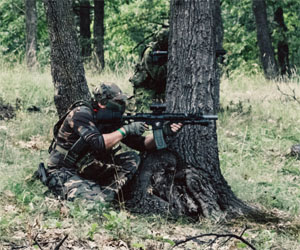
Pickleball Court Dynamics
 The Non-Volley Zone: Also known as "the kitchen," this is a crucial area on the court that extends 7 feet from the net on each side. The kitchen is a no-volley zone, meaning that players cannot hit the ball out of the air within this zone. This rule encourages strategic play, as players must carefully position themselves to avoid faulting.
The Non-Volley Zone: Also known as "the kitchen," this is a crucial area on the court that extends 7 feet from the net on each side. The kitchen is a no-volley zone, meaning that players cannot hit the ball out of the air within this zone. This rule encourages strategic play, as players must carefully position themselves to avoid faulting.
The Baseline: The back line of the court is where serves must originate. Players serve from behind this line, and the serve must clear the non-volley zone on the opposite side of the court. The baseline is a key starting point for each point and plays a role in determining the position of the serving team.
The Net: The pickleball net stands 34 inches at the center, which is lower than traditional tennis or badminton nets. The lower net height demands precise and controlled shots, particularly during the serve and volleys near the net.
Serving Boxes: Each side of the court is divided into two serving boxes. The serving team must serve diagonally into the opponent's service box, following specific serving rules. The diagonal serves create unique angles and placement opportunities, adding to the dynamic court dynamics.
Doubles vs. Singles: Pickleball is typically played in both doubles and singles formats, with different strategies and court dynamics in each. In doubles, players work as a team, cover the court together, and employ coordinated strategies. In singles, players have more court to cover, leading to increased lateral movement and reliance on individual skills.
Shot Placement: The compact court size emphasizes the importance of shot placement. Strategic placement of shots can force opponents out of position and create openings for offensive plays. Players often aim for the corners and sidelines to put pressure on their adversaries.
Wave Dynamics In Surfing
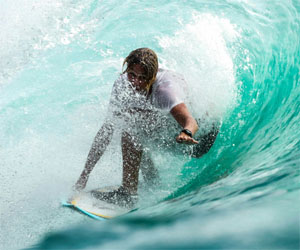 Wave Direction: Wave direction is an essential component of wave dynamics. The direction from which a wave approaches a coastline or surf break significantly influences the ride. Surfing enthusiasts pay close attention to the angle at which waves approach the shore. A perfectly aligned wave can offer a long, thrilling ride, while a misaligned wave might break in a less-than-ideal manner.
Wave Direction: Wave direction is an essential component of wave dynamics. The direction from which a wave approaches a coastline or surf break significantly influences the ride. Surfing enthusiasts pay close attention to the angle at which waves approach the shore. A perfectly aligned wave can offer a long, thrilling ride, while a misaligned wave might break in a less-than-ideal manner.
Wave Period: Wave period, often expressed in seconds, refers to the time it takes for two consecutive wave crests to pass a fixed point. Longer wave periods are indicative of powerful and well-organized swells, resulting in cleaner and more rideable waves. Shorter wave periods can lead to choppy and less predictable conditions.
Wave Sets: Wave sets consist of groups of waves that arrive consecutively. In between sets, surfers experience lulls, creating moments of anticipation and readiness. Understanding the rhythm of wave sets is crucial for positioning and timing when paddling and catching waves. Surfers need to gauge the intervals between sets to be in the right place at the right time.
Types Of Waves:
The classification of waves based on their shape and breaking behavior plays a significant role in wave dynamics:
Reef Breaks: These waves break over a submerged reef or rocky bottom. Reef breaks can produce fast, hollow waves that are favored by experienced surfers.
Point Breaks: Point breaks are formed by waves breaking along a point of land. They create long, peeling waves that are ideal for graceful rides and maneuvers.